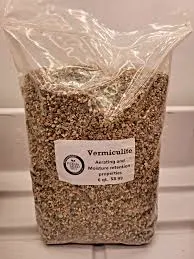Dec . 24, 2024 20:26 Back to list
Innovative Approaches to Enhance Nitrogen Adsorption in Advanced Materials
Understanding Nitrogen Adsorbents Properties, Applications, and Advancements
Nitrogen is a vital component of our atmosphere, making up about 78% by volume. It is inert, non-toxic, and plays a crucial role in various industrial processes, particularly in the production of fertilizers, explosives, and pharmaceuticals. However, the unique properties of nitrogen make its efficient adsorption critical in several applications, including gas separation, environmental remediation, and catalytic processes. This is where nitrogen adsorbents come into play.
What are Nitrogen Adsorbents?
Nitrogen adsorbents are materials designed to selectively capture and retain nitrogen molecules from a mixture of gases. These materials can be either physical or chemical adsorbents. Physical adsorbents, such as activated carbon and zeolites, trap nitrogen through weak van der Waals forces. In contrast, chemical adsorbents form strong bonds with nitrogen gas, resulting in higher adsorption capacity.
The efficiency of an adsorbent is influenced by various factors, including surface area, pore size, and chemical functionality. High surface area materials provide more active sites for nitrogen molecules to adhere to, while a proper pore structure ensures that these molecules can be effectively captured.
Types and Properties of Nitrogen Adsorbents
1. Activated Charcoal This is one of the most commonly used adsorbents. Its extensive surface area and porous structure make it highly effective for gas adsorption. Activated charcoal is particularly useful in the purification of air and water, as it can trap nitrogen along with contaminants.
2. Zeolites These are microporous crystalline materials that have a unique ability to selectively adsorb gases. Zeolites possess well-defined pores that allow for size-selective adsorption, making them ideal for nitrogen separation processes. For instance, they can be used to separate nitrogen from other gases in air separation units.
3. Metal-Organic Frameworks (MOFs) A newer class of adsorbents that have gained popularity due to their tunable structures and high surface areas. MOFs can be engineered at the molecular level to enhance their nitrogen adsorption properties, making them suitable for advanced applications in gas storage and separation.
4. Carbon Nanotubes These materials have exceptional mechanical properties and a high surface area, making them promising candidates for nitrogen adsorption. They can be used in various applications, from gas sensors to nanocomposite materials.
nitrogen adsorbent

Applications of Nitrogen Adsorbents
1. Gas Separation One of the primary applications of nitrogen adsorbents is in gas separation processes. In industries, the demand for pure nitrogen often arises, and adsorbents are employed to selectively capture nitrogen from air, allowing for the enrichment of this gas for various industrial applications.
2. Environmental Remediation Nitrogen adsorbents play a significant role in environmental processes, particularly in removing nitrogen oxides (NOx) from industrial emissions. By adsorbing these harmful gases, adsorbents can help in reducing pollution levels in the environment.
3. Catalysis In catalytic processes, nitrogen adsorbents can improve reaction efficiencies. They can facilitate the supply of nitrogen to catalytic converters and other reaction systems, enhancing the overall performance of chemical reactions.
4. Energy Storage With advancements in the energy sector, nitrogen adsorbents are being explored for their potential in energy storage systems, particularly in hydrogen storage technologies.
Recent Advancements and Future Directions
Research into nitrogen adsorbents is continuously evolving, with ongoing studies focusing on enhancing adsorption capacities and selectivities. Nanotechnology is expected to play a pivotal role in this regard. By manipulating materials at the nanoscale, researchers aim to develop adsorbents with unprecedented performance metrics.
Sustainability is also a critical focus. Scientists are prioritizing the development of eco-friendly adsorbents from bio-waste and renewable resources. This not only helps in reducing waste but also aligns with global sustainability goals.
In conclusion, nitrogen adsorbents are an essential component in a variety of industrial applications. As research progresses, the capabilities and efficiencies of these materials will continue to improve, enabling more effective and environmentally friendly processes. Understanding the properties and functions of nitrogen adsorbents is pivotal for innovators and industries looking to harness the full potential of nitrogen and related technologies.
-
Eco-Friendly Granule Covering Agent | Dust & Caking Control
NewsAug.06,2025
-
Fe-C Composite Pellets for BOF: High-Efficiency & Cost-Saving
NewsAug.05,2025
-
Premium Tundish Covering Agents Exporters | High Purity
NewsAug.04,2025
-
Fe-C Composite Pellets for BOF | Efficient & Economical
NewsAug.03,2025
-
Top Tundish Covering Agent Exporters | Premium Quality Solutions
NewsAug.02,2025
-
First Bauxite Exporters | AI-Optimized Supply
NewsAug.01,2025
